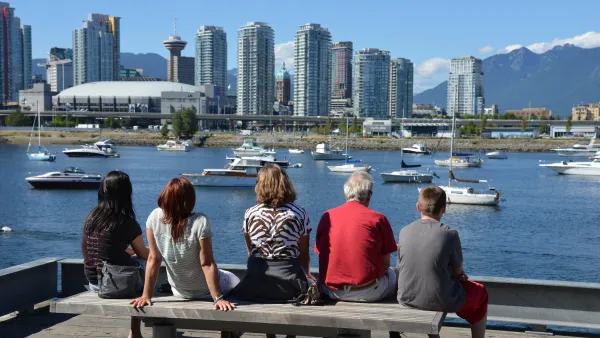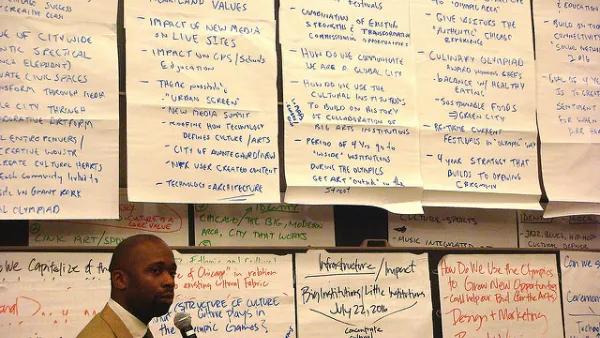In a compelling entry into the public dialog around placemaking, Project for Public Spaces argues that people, rather than merely places, create vibrancy in a community.
As it gears up for the first meeting of the Placemaking Leadership Council in Detroit from April 11-12, planning nonprofit Project for Public Spaces (PPS) has come out with an article clarifying the connection between placemaking and gentrification, the essential elements of a successful placemaking process, and the potential pitfalls of "creative placemaking."
One topic the article tackles is the the rise of the “creative” modifier in the debate around placemaking. Based on a misinterpretation of Richard Florida's Rise of the Creative Class, argues PPS, creative placemaking shifts the emphasis from inclusiveness to exclusivity and competition. Rather than treating cities and neighborhoods as already existing communities, the pitfall of this kind of placemaking is the assumption of a tabula rasa urban condition open to importing community members and economic drivers and causing gentrification. It can also put cities in competition with one another to attract and retain a creative workforce rather than focusing on improving local resources.
While identifying the typical markers of vibrancy as active art and music scenes and plenty of restaurants, PPS argues that ultimately "people are vibrancy" and that the most important provision of placemaking is a forum for ongoing community conversations, not simply the best place to have gelato.
FULL STORY: Placemaking: Shared focus on place builds vibrant destinations

National Parks Layoffs Will Cause Communities to Lose Billions
Thousands of essential park workers were laid off this week, just before the busy spring break season.

Retro-silient?: America’s First “Eco-burb,” The Woodlands Turns 50
A master-planned community north of Houston offers lessons on green infrastructure and resilient design, but falls short of its founder’s lofty affordability and walkability goals.

Delivering for America Plan Will Downgrade Mail Service in at Least 49.5 Percent of Zip Codes
Republican and Democrat lawmakers criticize the plan for its disproportionate negative impact on rural communities.

Test News Post 1
This is a summary

Test News Headline 46
Test for the image on the front page.

Balancing Bombs and Butterflies: How the National Guard Protects a Rare Species
The National Guard at Fort Indiantown Gap uses GIS technology and land management strategies to balance military training with conservation efforts, ensuring the survival of the rare eastern regal fritillary butterfly.
Urban Design for Planners 1: Software Tools
This six-course series explores essential urban design concepts using open source software and equips planners with the tools they need to participate fully in the urban design process.
Planning for Universal Design
Learn the tools for implementing Universal Design in planning regulations.
EMC Planning Group, Inc.
Planetizen
Planetizen
Mpact (formerly Rail~Volution)
Great Falls Development Authority, Inc.
HUDs Office of Policy Development and Research
NYU Wagner Graduate School of Public Service




























